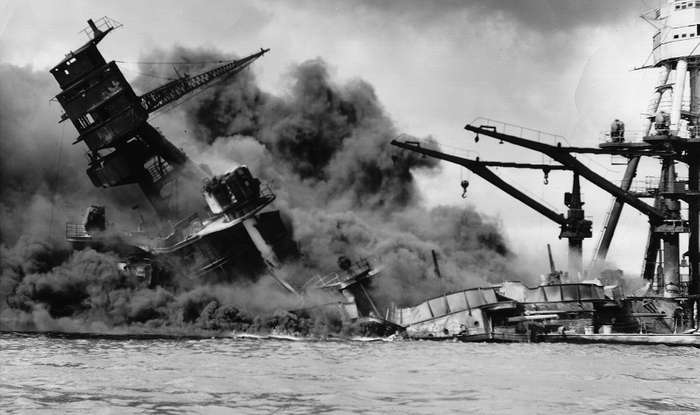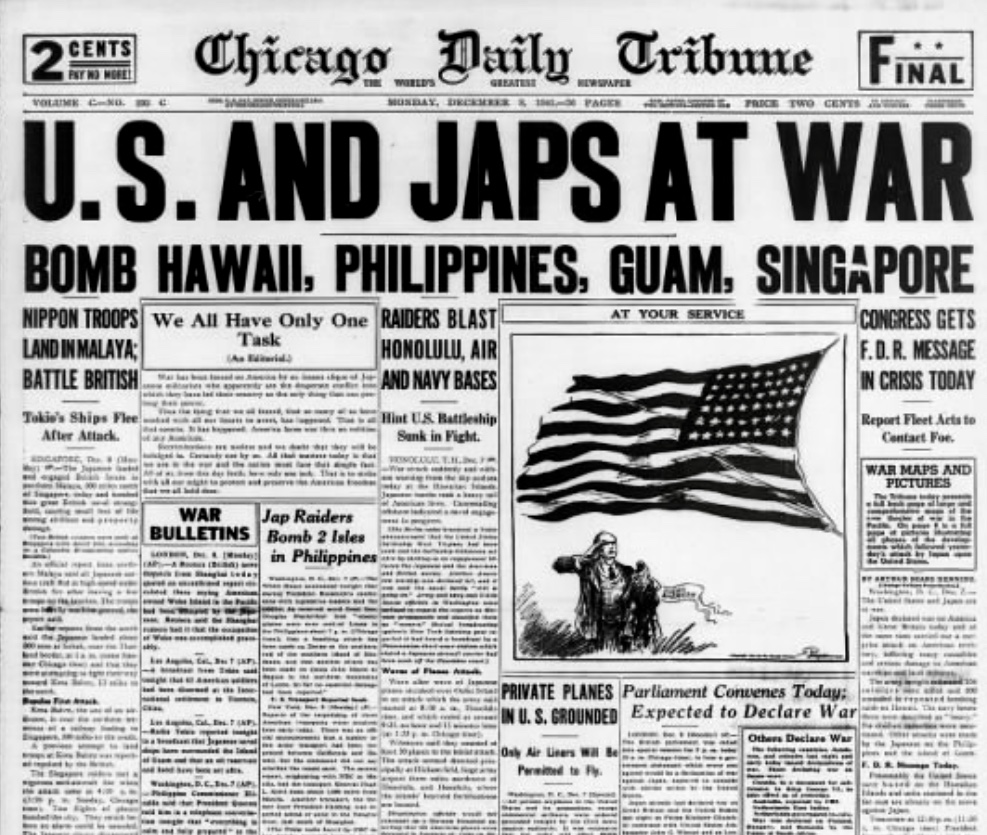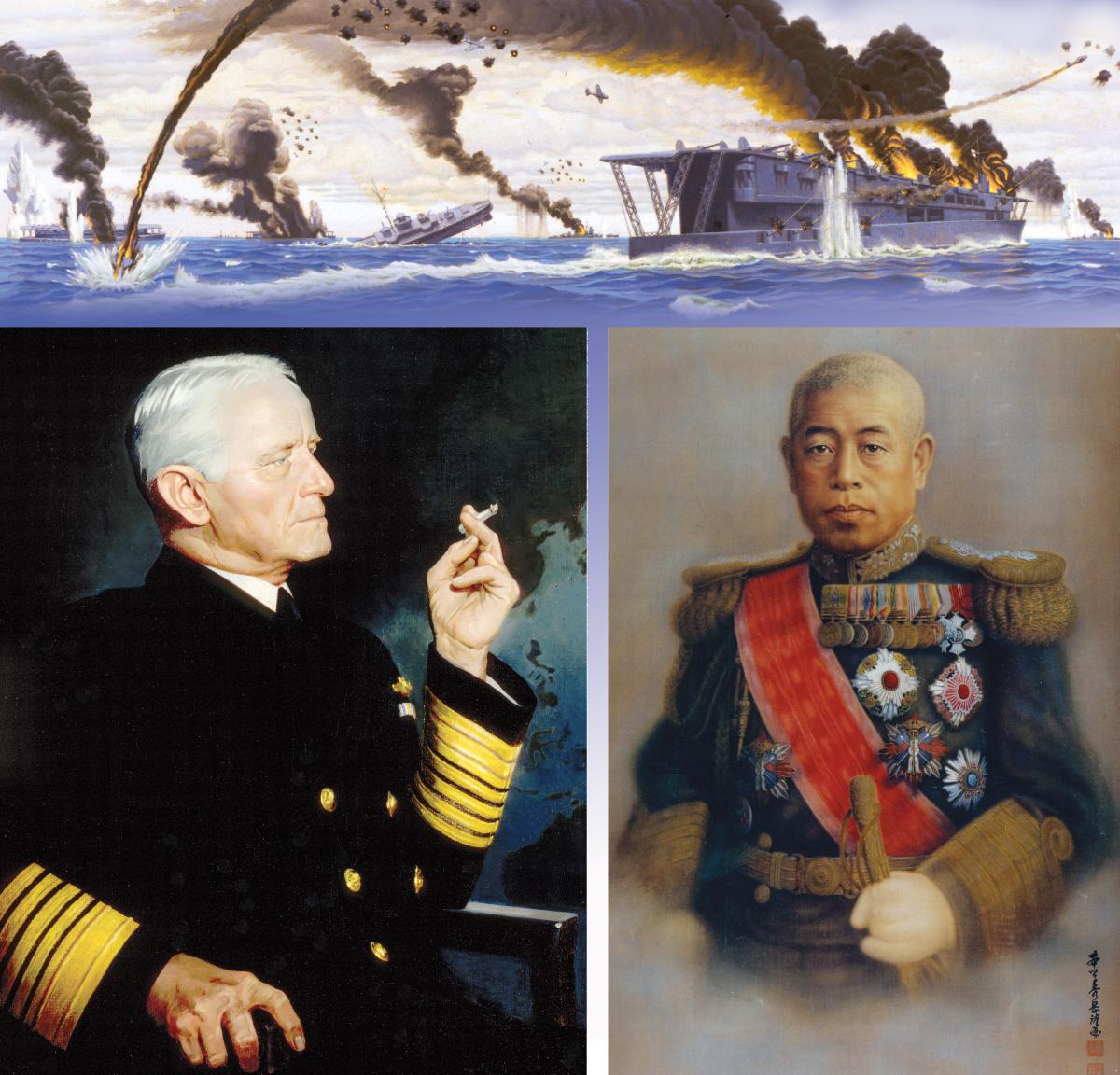"Before we're through with them, the Japanese language will be spoken only in Hell."
- Vice Admiral William F. "Bull" Halsey, U.S. Naval Institute.
“December 7, 1941 — a date which will live in infamy.”
- President Franklin D. Roosevelt.

The battleship U.S.S. Arizona sinking after being hit by Japanese air attack on Dec. 7, 1941, Military.com.
In June, 1942 the Axis powers were winning World War II. Following the attack on Pearl Harbor, the U.S. Navy was devastated. They had lost a significant amount of their fleet and were not prepared for war. Joseph Rochefort, in charge of naval intelligence at Station Hypo at Pearl Harbor felt guilty of his inability to warn of the attack and was determined to crack the Japanese code. At the time, part of the code had already been deciphered, however, all of the additives had not been considered. The next day, the U.S. declared war on Japan and began preparing for war. In the following six months, despite small offensives made by the U.S., the Japanese Empire was in total domination of the Pacific.

News headline of the U.S. declaring war on Japan, Chicago Daily Tribune, December 8, 1941.
"One of Japan’s main goals during World War II was to remove the United States as a Pacific power in order to gain territory in east Asia and the southwest Pacific islands. Japan hoped to defeat the US Pacific Fleet and use Midway as a base to attack Pearl Harbor, securing dominance in the region and then forcing a negotiated peace."
- The National WWII Museum New Orleans.
"Before we're through with them, the Japanese language will be spoken only in Hell."
- Vice Admiral William F. "Bull" Halsey, U.S. Naval Institute.
“I thought of a remark . . . that the United States is like a gigantic boiler. Once the fire is lighted under it there is no limit to the power it can generate. Being saturated and satiated with emotion and sensation, I went to bed and slept the sleep of the saved and thankful.”
- Winston Churchill, A Man Called Intrepid.

Opposing American and Japanese naval commanders Admiral Chester Nimitz and
Isoroku Yamamoto, U.S. Naval Institute.
Home
The Empire of Japan